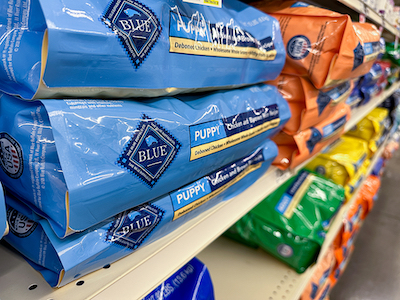When it comes to choosing the best food for our pets, the myriad of options available on the market can often make the task quite daunting. Two broad categories that often seem to create the most confusion for pet owners are premium pet food and bargain pet food.
In this article, we will delve deep into the differences between these two categories, assessing their nutritional value, ingredients, cost, and overall impact on pet health.
- Ingredients and Nutritional Value
Premium Pet Food
Premium pet food often boasts high-quality ingredients, a fact reflected in their higher price point. These foods typically contain a higher percentage of meat-based protein sources, which are integral for your pet’s health. Premium pet food also tends to contain a balance of carbohydrates, fats, fiber, and essential vitamins and minerals, all crucial for a pet’s balanced diet.
Furthermore, premium pet food is less likely to include artificial colors, flavors, or preservatives, and tends to be grain-free, which is a significant benefit for pets with allergies or sensitivities.
Bargain Pet Food
In contrast, bargain pet food, while more affordable, often uses lower quality ingredients. These foods may use “meat by-products” or “meat meal” as their primary protein source. While these aren’t necessarily harmful, they are typically less digestible than whole meat sources. Bargain pet food might also contain fillers like corn, wheat, and soy, which offer less nutritional value and can be problematic for pets with allergies.
2. Cost
Premium Pet Food
Premium pet food is more expensive upfront due to the superior quality ingredients and the intricate processing methods used. However, the higher cost could also mean feeding less to your pet as these foods are often more nutrient-dense. In the long run, this could potentially result in lower veterinary bills due to improved health.
Bargain Pet Food
Bargain pet food is definitely more pocket-friendly and can be a good option for pet owners on a tight budget. However, remember that you may have to feed your pet more of this food to meet their nutritional needs, which could lead to increased consumption and faster depletion.
3. Impact on Pet Health
Premium Pet Food
The superior ingredients and nutritional balance in premium pet food can result in visible health benefits for your pet. These may include a shinier coat, increased energy levels, better weight management, and improved digestion. Furthermore, premium food can lead to fewer health issues in the long term, such as obesity, heart disease, and skin allergies.
Bargain Pet Food
While bargain pet food can adequately sustain your pet, it may not provide the same level of health benefits as premium pet food. The lower quality ingredients and higher filler content can contribute to weight gain, digestive issues, and other health problems over time. However, not all bargain pet food is of poor quality, and some may still offer decent nutrition.
When choosing between premium and bargain pet food, it ultimately depends on what is best for your pet and your budget. Premium pet food, with its high-quality ingredients and balanced nutrition, is an excellent choice for pet health. However, it comes with a higher cost. On the other hand, bargain pet food is more affordable but may compromise somewhat on ingredient quality and nutritional balance.
Consulting with a trusted vet can provide insight into what specific nutrients your pet needs, considering their breed, age, weight, and health status. This can help guide your decision in choosing the right food for your pet, whether it falls into the premium or bargain category.
Remember, the most expensive food isn’t always the best, and the cheapest isn’t always the worst. It’s about finding a balanced diet that suits your pet and keeps them healthy and happy.
While cost is an important factor, the focus should be on providing balanced nutrition for your pet. If premium pet food is beyond your budget, consider high-quality bargain brands or look for ways to supplement your pet’s diet with necessary nutrients.
Some owners may find a mixed approach beneficial. For instance, you could feed your pet a base diet of premium food and supplement it with bargain food to make it more cost-effective without compromising too much on nutritional value.
Moreover, consider your pet’s preferences too. No matter how nutritious, if your pet doesn’t enjoy their food, it won’t do them much good. Experiment with different brands and flavors to see what your pet likes best, always paying attention to their energy levels, weight, coat, and overall health to ensure the food agrees with them.
Pet food recalls are another aspect to pay attention to. Both premium and bargain brands have had recalls in the past, so it’s essential to stay updated on pet food safety news.
In conclusion, while the premium vs. bargain pet food debate can seem complex, it boils down to finding a diet that suits your pet’s nutritional needs, your budget, and their palate. Consulting with your vet, doing your research, and observing your pet’s reaction to different foods are key to making the right decision. After all, a well-fed pet is a happy and healthy pet, and that’s what all pet owners ultimately aspire to.










